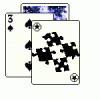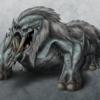I seem to recall Ascendancy had a 3D map (with stars connected by star lanes) you could rotate. I don't remember it impacting things much other than you had a way of deciding how to view a map that was randomly generated. At least, you wouldn't be stuck looking at a map that had things placed too close together.
2D or 3D star map?
I prefer 3D for realism, but it is harder to understand.
Here's what I suggest.if you go 3d
Split the galaxy into layers...say 5, 1000ly per layer
and then have a top-down hotkey where the stars on different layers have different "brightness" or color based on either distances from the top, or distance from the player ship.
If there is a star that is behind another star that you can't see from top down, just have a number appear near the star or when you select it bring up a small menu that lets you select the star you want.
These things only matter if you are flying through space in some non-instant form.
If you are using Jump Gates ignore 3D all together and use 2D as with Jump Gates the important part is not where the stars are in 3D space, but rather the relationship between the stars. A Jump Gate map is a 2D relational map.
I think I have come to a golden middle road on this one. I won't be portraying any single stars as the smallest interactable entity, but clusters of stars(made of hundreds and thousands of stars). The essense of gameplay would be unaffected. That way I could have entire galazies as my maps and suspension of belief could still be maintainable. Plus, it would be fairly realistic to have a 2D style to it - because at the scope of the width of galaxy, depth is arbirarily small and thus insignifiact.
You seem to have come to a decision, but I'll add my 2 cents. It's comparing apples to oranges, but Star Control had a functional 3D map. However, it was tiny.
Definitely 2D as Acharis suggested, I remember how much annoying map at Spore was.
It works well at Fragile Allegiance and Starbound, imo
mostates by moson?e | Embrace your burden
Definitely 2D as Acharis suggested, I remember how much annoying map at Spore was.
It works well at Fragile Allegiance and Starbound, imo
Spore is pseudo 3-d map...
The galaxy is 5000 light years deep save for the center 10,000 ly which is a 10,000 x 10,000 x 10,000 ly sphere more or less.
If you were to look straight down on the galaxy and take a 1x1x5000 ly slice out of it you would have roughly 50 stars in that slice on average.
So while spore is "3D" in the sense that you can move around in 3D and there is a little up and down movement in the stars, in the grand scheme of things it is more accurate to call it a 10 ly depth, which when compared to the diameter of the galaxy might as well be 2D.... 5,000 ly is 5% width of the galaxy... If you had a 10" notebook that would be a 1/2 inch thick which is fairly thick in terms of notebooks. And the center would be 1" thick.
Also the average distance between stars is 4ly. In closer to the center they can get as close as about 1ly and further out it gets highly sparse... I don't know what you're doing but it seems that even if you were going for clusters of stars you have layers of star clusters rather than simple 2D, but that's just my thinking
My opinion it depends on how much abstract your game is. Are it space ships in 3D within range abstract displayed on a map. Or fleet icons on full galactic 2D map.
The problem is a local group of stars could be stacked up in galaxy height. which means in case of 7 of those by fleet occupied stars on different galaxy height location you got almost 7 icons on top of each other. while a 3 other are well spaced in flat plane of the galaxy
Also it seems that those 7 are close at each other but could be that most of them are much further away. And selecting each of them is difficult.
I did play both homeworld game a long time ago. And I really like them. So 3D might work just as good. But is also needed if you command on per unit level in 3D RTS game.
So it depends more on how abstract your kind of game is.
Also if 2D give you enough usability stick with it. I would go for 3D if 2D was not sufficient for that kind of game.
It is quite abstract. Similar style as the CK II or EU IV.
If I am going to do 3D map, then the local group is the gameworld, if I am going to do this in 2D galaxy can be the gameworld.
Also the average distance between stars is 4ly. In closer to the center they can get as close as about 1ly and further out it gets highly sparse... I don't know what you're doing but it seems that even if you were going for clusters of stars you have layers of star clusters rather than simple 2D, but that's just my thinking
I didn't mean clusters by the most strict definitions. I mean a cluster as an area of stars. Ideally clumps of stars if entire galaxy is observed from the top.
It is quite abstract. Similar style as the CK II or EU IV.
If I am going to do 3D map, then the local group is the gameworld, if I am going to do this in 2D galaxy can be the gameworld.
Also the average distance between stars is 4ly. In closer to the center they can get as close as about 1ly and further out it gets highly sparse... I don't know what you're doing but it seems that even if you were going for clusters of stars you have layers of star clusters rather than simple 2D, but that's just my thinking
I didn't mean clusters by the most strict definitions. I mean a cluster as an area of stars. Ideally clumps of stars if entire galaxy is observed from the top.
Neither did I. If you're doing a Europa Universalis type game, which I've not played, but your concept seems somewhat in line to one of the ideas I was thinking for a game I've always wanted, just yours would be less to scale and such...
I divide the galaxy into units I call a Lida. 1 Lida = 24TM or roughly 160ish AU. 1 Lida also represents 1 Light Day roughly, which is a much more relevant term than a Light Year. It also just happens to be roughly the diameter of the inside of the heliopause (ie the solar system)
Average distance between stars in this metric is 1,461 Lida, or 1.5 KiloLida.
And the distance from the center of the galaxy to the edge? 50,000 x 365.25. Or 18,262,500 Lida or, 18,262.5 KiloLida.
We can make it a round 20,000 KiloLida
This makes it so you can divide up the galaxy easily into nice blocks AND for movements it relates directly to a day so it's easy to conceptualize movements and such in this unit.
The common size for a sector is 20^3. in this frame it means that it takes 20,000 days for light travel across height, width, or depth of this region and inside this region is roughly 2,197 stars.
This is more than enough to use the way EU uses it's provinces a polities. and you end up on a flat map 1000x1000 clusters or polities.
To include depth, that is 1,826,250 Lida, round and set it KiloLida's that's 2000 KiloLidas and then divided into sectors, that's 100 sectors deep....
So if you add depth you have 1000x1000x100 sectors/polities...or 100 million.
If you start in 1 polity on a flat map you'd have 4 polities to deal with, with 3d map you'd have 6. This is a roughly accurate projection of how much distance between advanced civs there are too, but I don't want to get into that. I see no reason why you wouldn't add in the layers, other than maybe processing or the possibility that player wouldn't keep in mind that there is also a depth component, but I think that's a little too condescending for my tastes... and the processing can be handed by having some sort of scan technology where you can only see a certain number of areas around you or something like that.. since civilizations too far away wouldn't even register with you. You could also use this as a way for the game to balance the challenge as you gain power and conquer those around you it'd be boring if there is no way you could lose so if there was a mechanism so that a new civ could be introduced that rivals yours and this would continue on at bigger and bigger scales that would increase the challenge as need be against the player.









